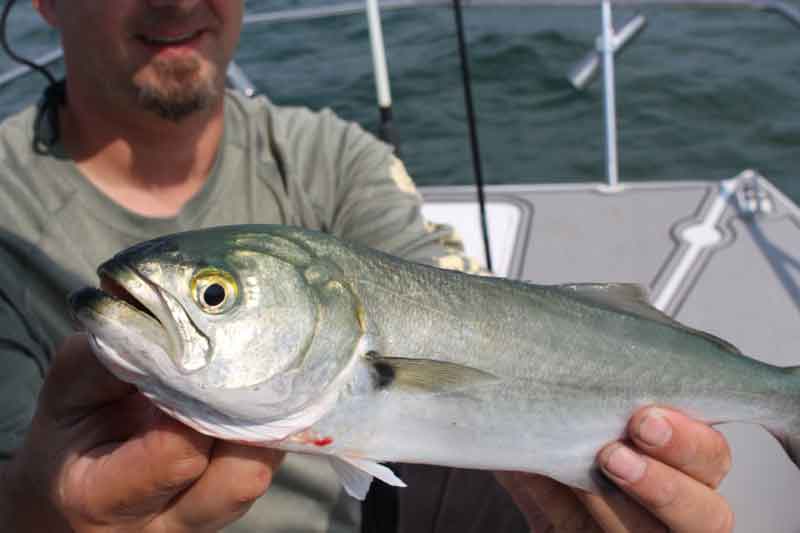

They are incredibly strong fish with torpedo-shaped bodies that are able to slice though the water with great speed. Hard winds from the northeast or east often push not only water but thousands of tiny baitfish, such as bay anchovies or silversides into the shallows where they have trouble swimming in the rough unsettled waters.īut these rough and rowdy waters are no problem for bluefish. Bluefish love the whitewater and hard-pulling currents. Some of the best surf fishing occurs in October, especially for bluefish, before water temperatures get too cold and when the water is churned up by tropical storms and other wind-blown storms and rough weather. If they can’t appreciate the fight and ferocious nature of a bluefish, it's their loss, right? With all due respect to striped bass, the unofficial saltwater fish of New York Harbor, pound for pound the bluefish is the finest and fiercest fighting fish in local tidal waters. They called bluefish the “most ferocious and bloodthirsty fish in the sea, leaving in its wake a trail of dead and mangled mackerel, menhaden, herring, alewives, etc, on all of which it preys.”

Bigelow and William Schroeder, wrote the Fishes of the Gulf of Maine published in 1953 by the U.S.
This might have been an overestimation, since modern scientific tools were not present to accurately count fish, but large schools of bluefish do have aggressive feeding habits and are frequently known to demolish enormous schools of baitfish.ĭecades later, prominent wildlife scientists Henry B. Spencer Fullerton Baird, an American naturalist, ornithologist, ichthyologist, herpetologist, and the first Commissioner of Fish and Fisheries for the United States Fish Commission, writing in the 1870's, estimated that large schools of bluefish annually consumed “ at least twelve hundred million fish during the four summer months off southern New England” which he was present in Woods Hole, MA. Bluefish are visual feeders, often hunting in large schools during the daytime to attack anything that moves or slightly resembles food, such as a human foot or thumb. They will travel in large schools to feed predominantly on menhaden, herring, or on any prey they can capture. Renowned for their fighting ability, bluefish have voracious appetites and is a frenzied eater. For bluefish ( Pomatomus saltatrix), a native predator fish in New York Harbor and surrounding tidal waters, October means just one thing - it’s time to gorge on large schools of baitfish.


 0 kommentar(er)
0 kommentar(er)
